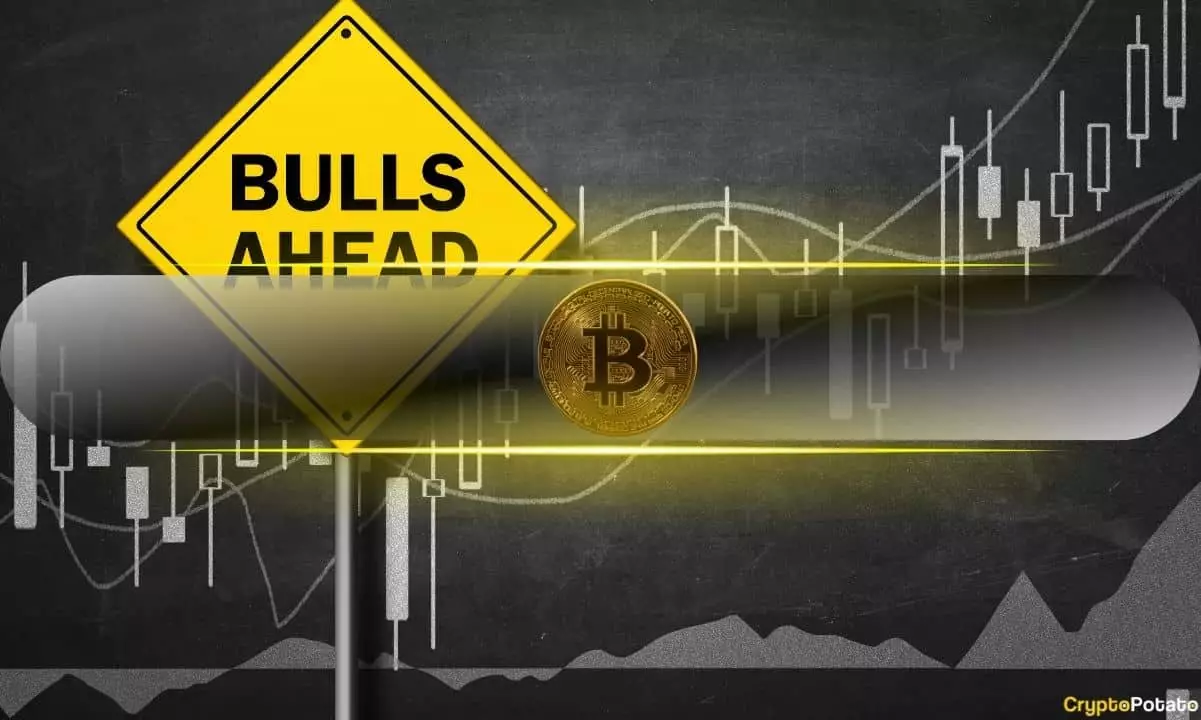The cryptocurrency market is no stranger to volatility, yet Bitcoin’s recent upswing of over 25% since April 9th demands our attention. Trading above $96,500 is no simple feat for Bitcoin (BTC), particularly in an environment marked by uncertainty and drastic price swings. Such a rebound isn’t merely a product of fluctuating sentiment but seems indicative of more profound underlying trends shaping the cryptocurrency landscape. This explosion of investor enthusiasm juxtaposed against diminishing volatility showcases the robust nature of Bitcoin’s appeal, especially as it continues to solidify itself as a viable asset class.
This journey isn’t solely a narrative of numbers; there are critical macro-economic factors at play. Bitcoin maximalist Robert Breedlove’s perspective on miner economics sheds light on another layer of the story, asserting that BTC could very well be on the brink of an exhilarating bull run. This is where the dialogue shifts from mere speculation to an insightful analysis of how underlying structural elements within the Bitcoin ecosystem can influence its future.
Mining Economics: The Backbone of Bitcoin’s Value
At the heart of Breedlove’s analysis lies the average miner’s cost of production, a vital factor that has acted as a reliable barometer for market bottoms in the past. If we consider that Bitcoin rarely trades significantly beneath its production cost within a rational market, it becomes plausible to appreciate why this metric can set the stage for potential price surges. When the unprofitable miners, often the first to flee in a downturn, are pushed out of the market, the reduced selling pressure naturally leads to a healthier supply-demand dynamic, creating fertile ground for price increments. Current data indicating a solid break-even line highlights a potential floor for Bitcoin’s price, optimizing conditions for potential upside.
More compelling is the data illustrating long-term holders in the Bitcoin ecosystem, individuals who resist the temptations of the tumultuous marketplace. In the past 30 days alone, these steadfast investors have accumulated an impressive 150,000 BTC. This pattern suggests anticipating a supply shock—a scenario in which demand outstrips available supply, leading inevitably to upward price adjustments. The fact that on-chain data indicates whales (wealthier investors) have made significant purchases, totaling around $4 billion in the last weeks of April, further substantiates this thesis of growing scarcity.
The Role of Institutional Interest and Macro-Economic Trends
Amidst all this, we should pause to examine the macroeconomic backdrop nurturing Bitcoin’s growth. Breedlove emphasizes Bitcoin’s high correlation with the health of the U.S. dollar and the overarching liquidity in global markets—an observation that resonates with sentiments from industry veterans like Arthur Hayes. Central banks have sought to ease monetary controls, which fosters an environment conducive to asset speculation. In a scene where fiat liquidity is increasing, Bitcoin finds itself well-positioned to attract capital from various backgrounds, including institutional investors eager to diversify into risk assets such as cryptocurrencies.
The emergence of Bitcoin Exchange-Traded Funds (ETFs) and other institutional-grade financial products continues to play a pivotal role in making Bitcoin more accessible than ever to a broader audience. The stage is set for new capital inflows, drawn to the opaque yet alluring world of cryptocurrencies. Each new dollar entering the market signifies both opportunity and potential price appreciation.
Scalability and Sustainability: The Future of Bitcoin
The crucial question remains: can Bitcoin’s growth be sustained, or is it merely a transient blip? The dynamics of scarcity, driven by the diminishing amount of Bitcoin on exchanges, coupled with unyielding support from long-term holders, lend confidence to this narrative. As traditional financial systems evolve and adapt, Bitcoin stands out as a formidable alternative asset.
With global liquidity trends favoring risk assets and a continuously professionalizing Bitcoin ecosystem, we find ourselves amidst a transformative period in which Bitcoin’s potential can no longer be dismissed. If correctly navigated, this is not mere investment speculation; it’s a robust evolution towards a new economic paradigm. In this landscape, Bitcoin is not just a speculative vehicle; it has evolved into an asset with intrinsic value that demands a reconsidered place within our evolving financial mosaic.

